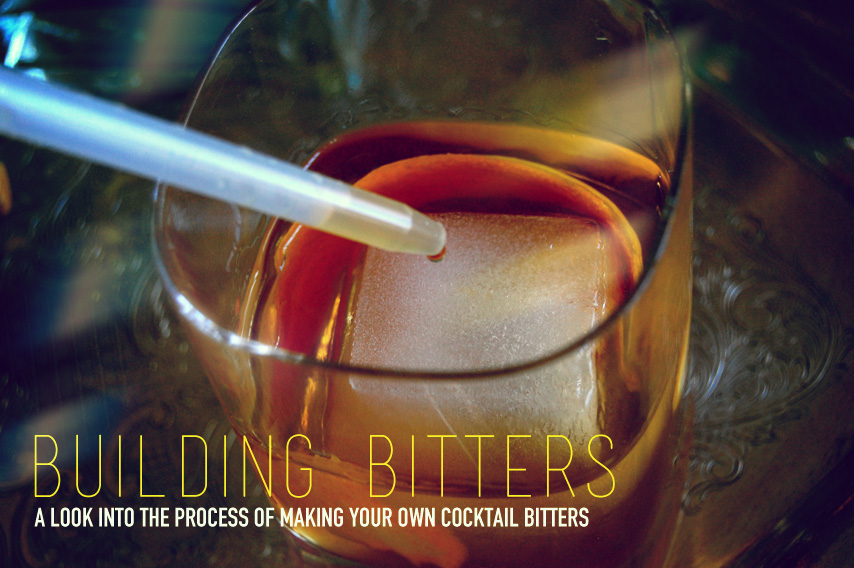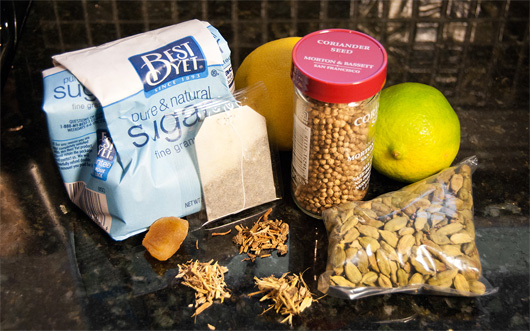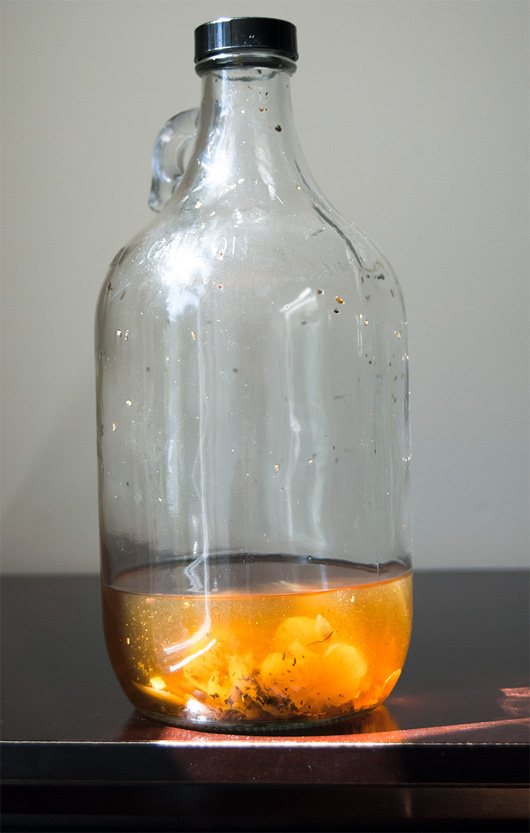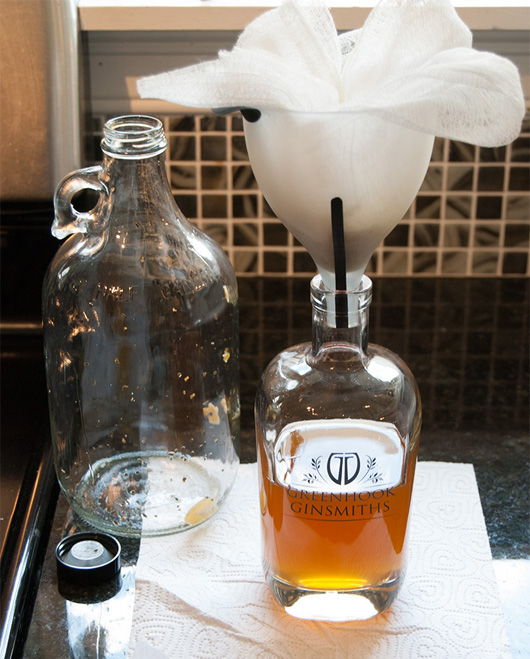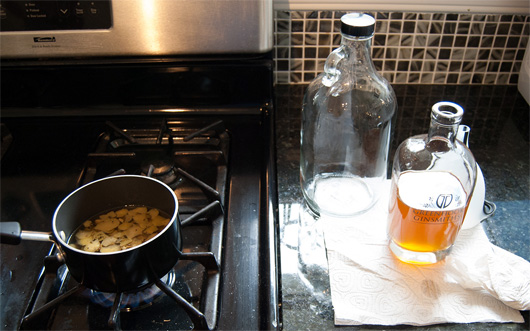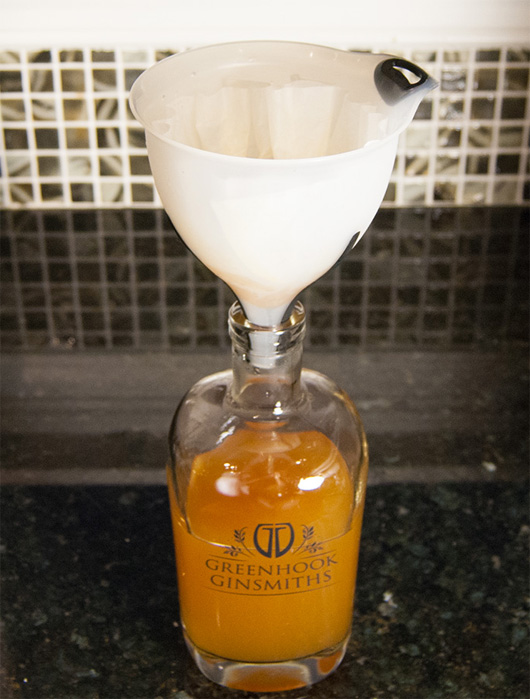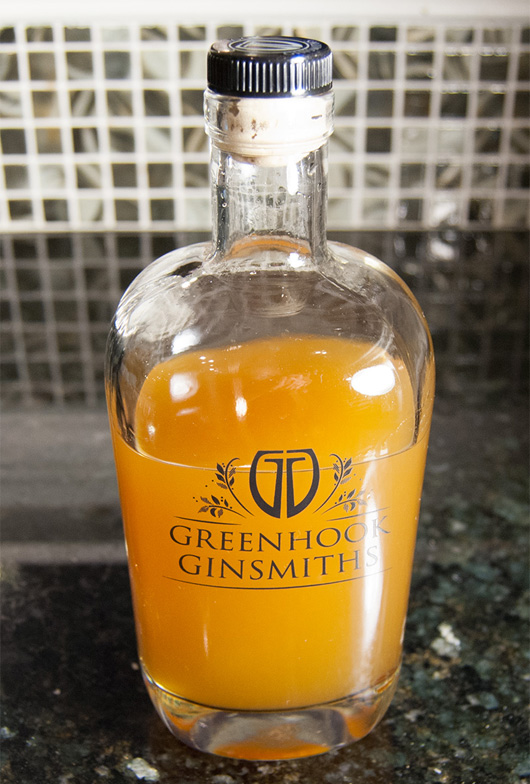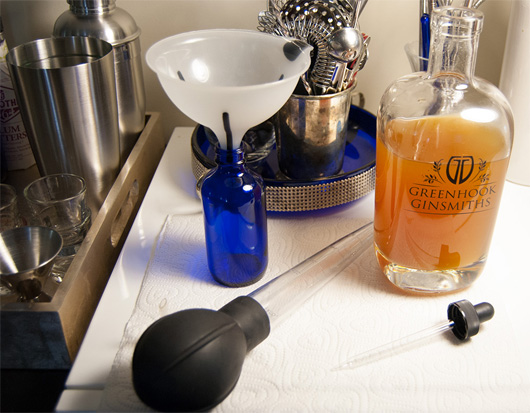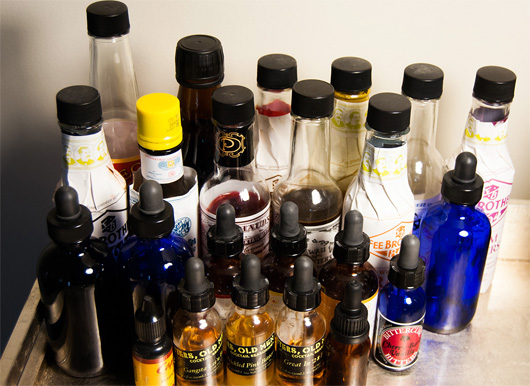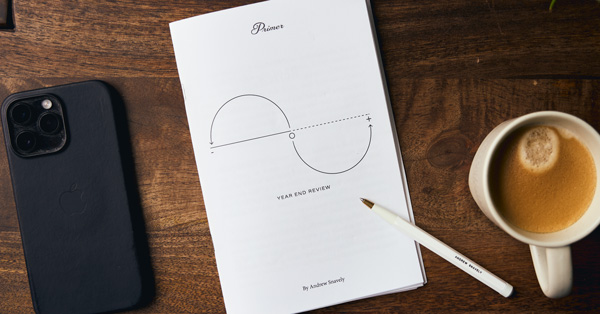As you may have guessed from my many articles for Primer, I’m a cocktail fan. As you may also have guessed from the several original recipes featured in those articles, I like creating my own unique mixtures and flavor profiles. In addition to all of that, I happen to be a big fan of history in general and cocktail history in particular.
So when my wife bought me a copy of Bitters: A Spirited History of a Classic Cure-All by Brad Thomas Parsons, I read through it cover to cover, enjoying the historical information, the glimpse into modern bartending, and all the many cocktail recipes, old and new, that are featured. The section that most caught my attention, though, was on making your own bitters. I re-read this part a few times, getting a feel for the underlying basics of bitters-making, and then embarked upon creating my own recipe.
Why not start with one of the book’s recipes? I guess I’ve never been a fan of reinventing the wheel. When I first started brewing beer, I followed a basic brown ale recipe, but the result wasn’t particularly interesting and more importantly, it didn’t feel like the beer was mine. Every batch I’ve brewed since has been my own recipe, developed using BeerTools Pro, and whether success or failure (and I’ve had some of each), they’ve always been my beers. That matters to me.
Thus, I undertook making my own aromatic bitters. Arguably the most common and popular type, aromatics tend to focus on warm spices like cinnamon and clove, vanilla, nutmeg … Angostura is the most famous example, butPeychaud’s Bitters, Fee Brother’s Old Fashion Aromatic Bitters, The Bitter Truth’s Old Time Aromatic and Jerry Thomas’s Decanter Bitters, Bittercube’s Cherry Bark Vanilla Bitters, and many others all fall into this category. My aromatic recipe featured dried cherries, vanilla, lots of orange peel, and cinnamon, among other things. They came out really well, and I use them often in the cocktails I make for myself and my guests (and document on my nightly cocktail blog, DrinkShouts).
A few weeks ago I decided I wanted to make some Asian-influenced citrus bitters, so I put together a recipe and got started. I took pictures along the way, so I could document the process from start to finish. Here it is!
Step 1 – Assemble Ingredients
At their core, bitters are just high-proof alcohol infused with various flavors. You can’t infuse something without ingredients, so I had to assemble those (and get some cheesecloth, while I was at it). They fall into three basic categories: liquids, bittering agents, and flavoring agents. Liquids include the alcohol, water, and a bit of simple syrup at the end to temper the, well, bitterness. Bittering agents are mainly barks and roots which contain both flavor and a whole lot of bitter taste. A little of these goes a very long way. Flavoring agents are things like citrus peels, spices, herbs, and the like – ingredients which add taste and smell but don’t impact the bitterness much one way or the other.
Flavoring agents and liquids are easily acquired. Bittering agents can be found online but often only at strange specialty shops. I ordered mine through a health website – The Natural Health Alliance, and each bag came with a big warning on it that the contents might be dangerous for consumption (the various items I ordered are absolutely not dangerous; they just put that sticker on every bag). I had to order a pound of each, and as you’ll see from the recipe, that’s a ridiculous amount, but they weren’t too expensive, and they never go bad, so I’ll be able to use them for years and years.
Here’s the final recipe for my Asian-inspired citrus bitters:
Liquids
- 2 Cups 100 Proof Vodka
- 1 Cup Water
- 2 TBSP Simple Syrup
- Bittering Agents
Bittering Agents
- ¼ TSP Angelica Root
- ¼ TSP Gentian
- ¼ TSP Licorice Root
- Flavoring Agents
Flavoring Agents
- 3 Small Cardamom Pods, Lightly Crushed
- ¼ TSP Fresh Ginger, Chopped
- 1 TSP Jasmine Green Tea
- 1 TBSP Dried Lime Peel, Chopped
- 1 Lemon’s Worth of Fresh Lemon Peel, Chopped
- ¼ TSP Coriander Seeds
I dried the lime peel myself – just peel it with a vegetable peeler and then put it in the oven at 200 degrees for about 45 minutes. It’ll get crispy around the edges and leathery, like beef jerky. That’s when you chop it up. Two limes should yield just about one TBSP of dried peel.
Step 2 – Initial Infusion
As you’ll see from the pictures, I used a clear beer growler for my infusion vessel, but I don’t actually recommend this. The tight mouth of the bottle is annoying to work with. If you can get a 24 oz mason jar, I strongly recommend using that instead. An old, washed pickle jar or similar would also work very well.
Combine all of the bittering and flavoring ingredients in the infusing vessel with the vodka, and shake thoroughly. Try to leave as little sediment as possible on the sides of vessel, but it’s not a big deal: you’ll be shaking this daily for two weeks. Just put it somewhere out of the sunlight, shake it once a day, and otherwise leave it alone. The magic will happen.
Step 3 – Separation, Boiling, Secondary Infusion
Once your two weeks have passed, you’ll need a second vessel for temporary storage. I used an empty Greenhook Gin bottle (note: if you can get your hands on Greenhook, do so, because it’s delicious). Get a funnel or strainer, depending on your second vessel’s size, and line it with several layers of cheesecloth. Then carefully dump the contents of your infusion vessel, straining out the solids. When that’s finished, wrap up the cheesecloth and squeeze as much of the infused booze out into the second vessel as possible. Cap that vessel up, put it away someplace dark, and ignore it for a week. Some sediment will separate out. This is OK.
Now dump the solids into a small pot and add the cup of water mentioned in the ingredients list (I used the water to rinse the last of the solids out of the growler and then poured it into the pot). Bring everything to a boil, then drop the heat, cover it, and let it simmer for ten minutes. This will make your house smell awesome. When you’re finished, let everything cool to room temperature. Then pour everything back into your infusion vessel, cap it up, and put it away someplace dark. Shake it once a day for a week. Don’t worry; it’s not going to grow mold or anything.
Step 4 – Combination and Filtering
When your week has passed (bringing you up to three, total), it’s time to combine the infused water with the infused booze. Open the vessel where you’ve been storing the infused vodka, and put a strainer or funnel lined with many layers of cheesecloth over it. Slowly pour the infused water into the cheesecloth until all the liquid’s in one bottle (again, squeeze the cheesecloth at the end to get the last few drops). You can now discard the solids and re-filter this liquid as many times as you want. Keep in mind, though, that unless you have a factory-quality filtration system, the result is always going to be a bit cloudy and you’ll have to shake the bitters bottle before using. Don’t worry about it: given that you’ll be using about five drops of this stuff per drink, it’s not going to affect how pretty your cocktails look.
When you’ve filtered as much as you like, pour in the two tablespoons of simple syrup, cap, and shake thoroughly to combine. The book I mentioned above recommends rich syrup (ie: 2 parts sugar to 1 part water) but I prefer standard 1:1 syrup. I find the rich syrup makes the bitters too sweet for my taste.
Step 5 – The Final Wait and Bottling
Once your simple syrup is in, you’re done for now. Put your vessel back in the cupboard, or wherever it’s dark, and let it sit for three days. This is just a final filtering step – some particles might rise to the surface. If so, skim them off on the third day, and you’re done. Time to bottle!
I like eyedropper bottles, but you can also get ones with dasher caps. You can also of course save any empty bitters bottles you have and just reuse those. To transfer you’ll need a small funnel and a steady hand. Be careful of overflows! Wouldn’t want to waste this stuff. I also included a turkey baster in the picture, as an option, but if you use an empty booze bottle like I did, the baster won’t actually fit!
Once bottled, you can store your bitters indefinitely. The flavor may ebb a little if you keep them for more than a year, but since they’re fairly high alcohol (between 30 and 40% ABV), they won’t ever go bad. You can use them in any cocktail you want, though obviously certain flavors will play better with certain types of bitters than others. My Asian Citrus Bitters, which turned out fantastic, go really well with gin, rum and tequila-based cocktails.
Conclusion
Why make your own bitters? Well, no reason, really – there are dozens of high-quality bitters available now at many liquor stores, and you could spend a long time and a lot of money before you’d tried them all. Still, there’s something fulfilling about making something yourself, and it’s a lot of fun to taste cocktails that you’re already familiar with and see how your unique new bitters change them. Once in a while, for example, I like to make a cocktail without bitters, then strain it into two or three glasses and add different bitters to each. You’d be surprised just how much it changes the flavor!
Bitters-making is easy, fun, inexpensive, and the results will last you months or even years. If you’re into cocktails, you should definitely give it shot.



